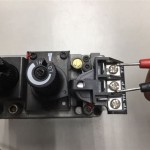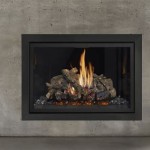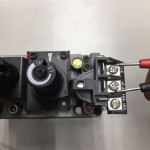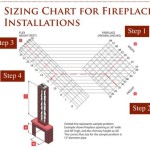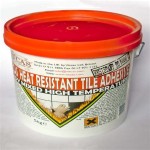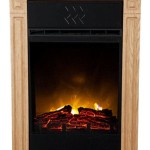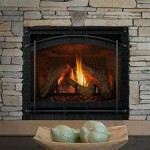Living Room TV Above Fireplace Decorating Ideas
Integrating a television above a fireplace is a common design challenge in modern living rooms. It presents both aesthetic and functional considerations that require careful planning. Successfully combining these two focal points involves understanding spatial dynamics, visual balance, and practical safety measures. The goal is to create a cohesive and comfortable environment that showcases both the inviting warmth of a fireplace and the entertainment value of a television.
Placing a television above a fireplace can maximize space, particularly in smaller living rooms. However, it also introduces potential problems, such as neck strain from viewing the television at an upward angle, heat damage to the television, and aesthetic disharmony if not executed carefully. A successful design addresses these concerns through proper mounting techniques, heat shielding, and thoughtful integration with the surrounding décor.
Optimizing Viewing Angle and Distance
One of the primary considerations when mounting a television above a fireplace is the viewing angle. Ideally, the center of the television screen should be at or slightly below eye level when seated. When the television is positioned too high, it can lead to neck strain and discomfort during extended viewing sessions. Calculating the optimal viewing angle involves considering the height of the seating and the size of the television screen. A higher sofa or larger screen necessitates a higher mounting position, but it's crucial to avoid exceeding a comfortable viewing range.
There are several strategies to mitigate the issue of a high viewing angle. Tilting mounts can angle the television downward, improving the viewing experience. These mounts are particularly useful when the television must be mounted significantly above eye level. Some mounts even offer a full range of motion, allowing the television to be pulled down and angled for optimal viewing when in use, and then pushed back up and flush against the wall when not in use.
Viewing distance is equally important. A general rule of thumb is that the viewing distance should be approximately 1.5 to 2.5 times the diagonal screen size. For example, a 55-inch television should be viewed from a distance of approximately 7 to 11 feet. When positioning the seating, ensure that there is adequate space to achieve this optimal viewing distance. If the room is too small to allow for this distance, consider a smaller television screen or alternative placement options.
The height of the fireplace mantel also plays a significant role. Installing a substantial mantel can provide a visual break between the fireplace and the television, reducing the perceived height and improving the overall aesthetics. A wider mantel can also act as a partial heat shield, deflecting heat away from the television.
Managing Heat and Protecting the Television
Heat generated by the fireplace poses a significant threat to the longevity and performance of the television. Electronic components are sensitive to high temperatures, and prolonged exposure to heat can cause damage, shorten the lifespan of the television, and even void the warranty. Therefore, implementing effective heat management strategies is crucial when mounting a television above a fireplace.
The primary method of protecting the television from heat is to create a physical barrier between the fireplace and the television. A deep mantel shelf can effectively deflect rising heat away from the television. The deeper the mantel, the more effective it will be in preventing heat from reaching the television. The mantel should ideally extend several inches beyond the front of the television to provide adequate protection.
Another strategy is to use heat-resistant materials in the construction of the fireplace surround. Non-combustible materials such as stone, brick, or concrete can effectively absorb and dissipate heat, reducing the amount of heat that reaches the television. Avoid using flammable materials such as wood paneling or fabric near the fireplace, as these can pose a fire hazard and contribute to the heat problem.
Ventilation is also essential. Ensure that there is adequate airflow around the television to prevent heat from building up. Avoid enclosing the television in a tight cabinet or alcove, as this can trap heat and exacerbate the problem. Consider installing vents or fans to circulate air and dissipate heat away from the television.
Regularly monitor the temperature around the television. Use a thermometer to check the temperature above the mantel while the fireplace is in use. If the temperature exceeds the television manufacturer's recommended operating range, take steps to reduce the heat, such as adjusting the fireplace settings or using a fan to circulate air.
Electric fireplaces produce less heat than traditional wood-burning or gas fireplaces, making them a safer option for mounting a television above. However, even with an electric fireplace, it is still important to take precautions to protect the television from heat damage.
Balancing Aesthetics and Creating a Cohesive Design
Beyond the functional considerations, the aesthetic integration of the television and fireplace is essential for creating a cohesive and visually appealing living room. The television and fireplace should complement each other and work together to create a balanced and harmonious focal point. Achieving this balance requires careful consideration of color, texture, and scale.
One approach is to camouflage the television by incorporating it into a larger gallery wall. Surround the television with artwork, photographs, and decorative objects to blend it into the background. This can help to minimize the starkness of the black screen and create a more visually interesting and dynamic focal point. Choose artwork and objects that complement the style and colors of the room to create a cohesive look.
Another option is to conceal the television behind a sliding panel or retractable screen when it is not in use. This allows the fireplace to take center stage when the television is not needed, creating a more traditional and inviting atmosphere. When the television is needed, the panel can be easily opened or the screen retracted to reveal the television.
The fireplace surround itself can be designed to complement the television. A minimalist surround with clean lines and neutral colors can create a modern and understated look that allows the television to blend seamlessly into the background. A more traditional surround with ornate detailing and rich colors can create a more dramatic and eye-catching focal point.
Consider the size and scale of the television and fireplace in relation to each other and the overall size of the room. A large television can overwhelm a small fireplace, while a small television can get lost above a large fireplace. Choose a television size that is proportionate to the size of the fireplace and the room. If the fireplace is particularly large, consider using decorative elements such as sconces or plants to balance the visual weight.
The color scheme of the room can also play a significant role in the overall aesthetics. Use a consistent color palette throughout the room to create a sense of harmony and cohesion. Neutral colors such as gray, beige, and white can create a calming and sophisticated atmosphere, while bolder colors such as blue, green, or red can add energy and personality. Consider using contrasting colors to highlight specific features, such as the fireplace or the television.
Ultimately, the key to successfully integrating a television above a fireplace is to create a balanced and harmonious design that addresses both functional and aesthetic considerations. By carefully planning the placement, managing heat, and balancing the aesthetics, it is possible to create a living room that is both stylish and comfortable.
The choice of mounting hardware is also a critical factor. A sturdy, reliable mount is essential for ensuring the safety of the television and preventing it from falling. Choose a mount that is specifically designed for mounting televisions above fireplaces and that is rated to support the weight of the television. Follow the manufacturer's instructions carefully when installing the mount.
Consider concealing the television cables and wires to create a cleaner and more organized look. Run the cables through the wall or use cable management systems to hide them from view. This will not only improve the aesthetics of the room but also prevent tripping hazards.

Real Life Rooms Decorating Ideas For A Tv Above Fireplace Remodelaholic Farm House Living Room Farmhouse Style Decor

Debate Should Your Tv Go Over Fireplace Plus The Perfect Compromise Built Ins Fireplaces Layout In Around

Real Life Rooms Decorating Ideas For A Tv Above Fireplace Remodelaholic

11 Tv Over Fireplace Ideas Livingroom Layout Furniture Living Room

Contemporary Modern Fireplace Designs With Tv Above Mantel

Modern Mantel Decor With A Tv 7 Ways To Pull It Off Chrissy Marie Blog

Mantel Decorating With A Tv 10 Ideas And Tips Nina Hendrick

Placing A Tv Over Your Fireplace Design Ideas Classic Living Room Home Family

10 Best Ideas For Decorating A Mantel With Tv Above It

Real Life Rooms Decorating Ideas For A Tv Above Fireplace Remodelaholic

